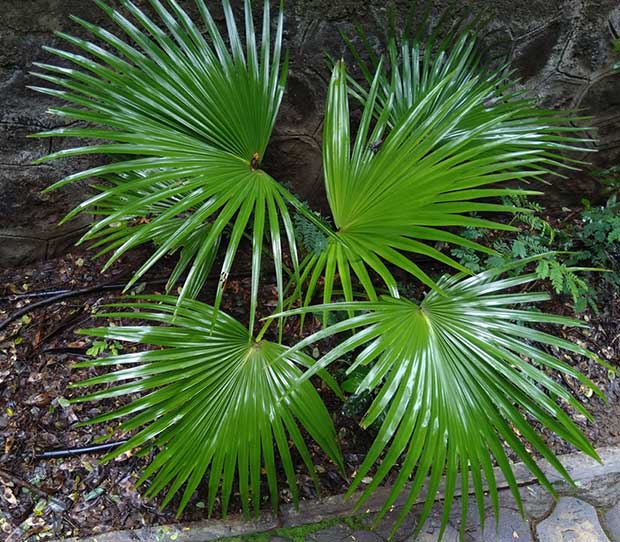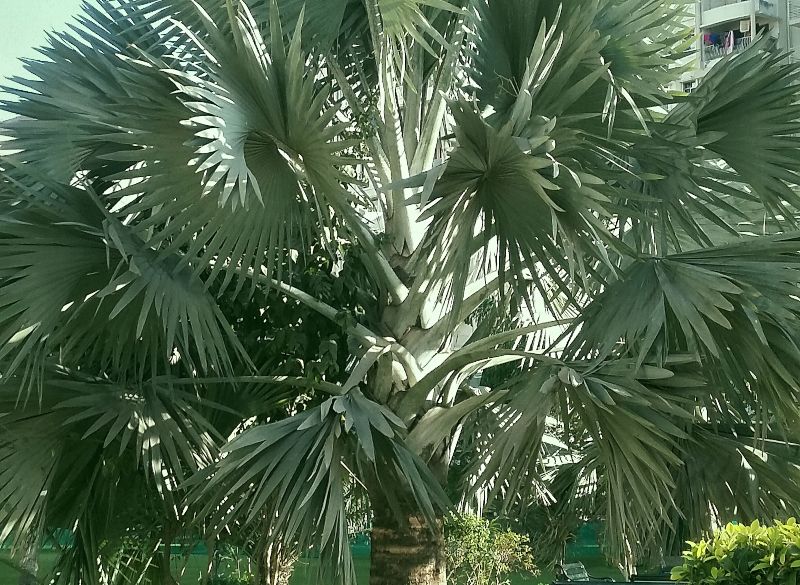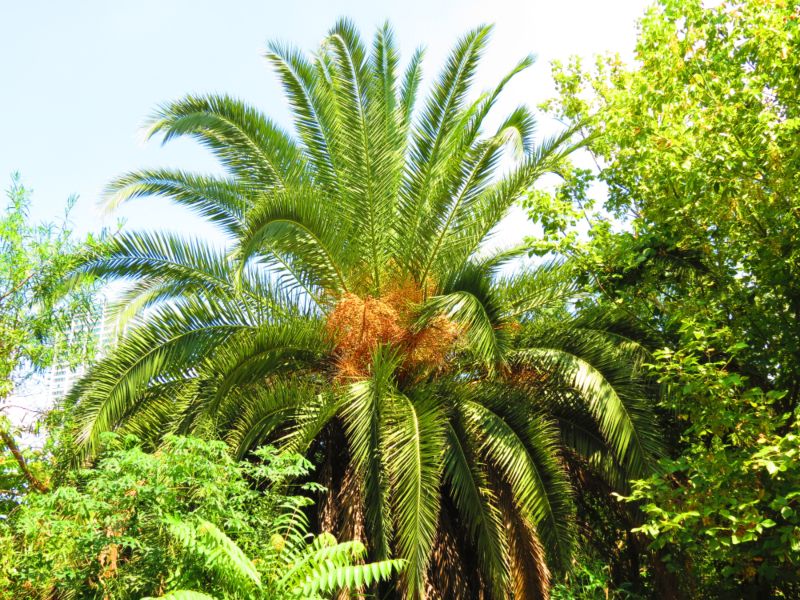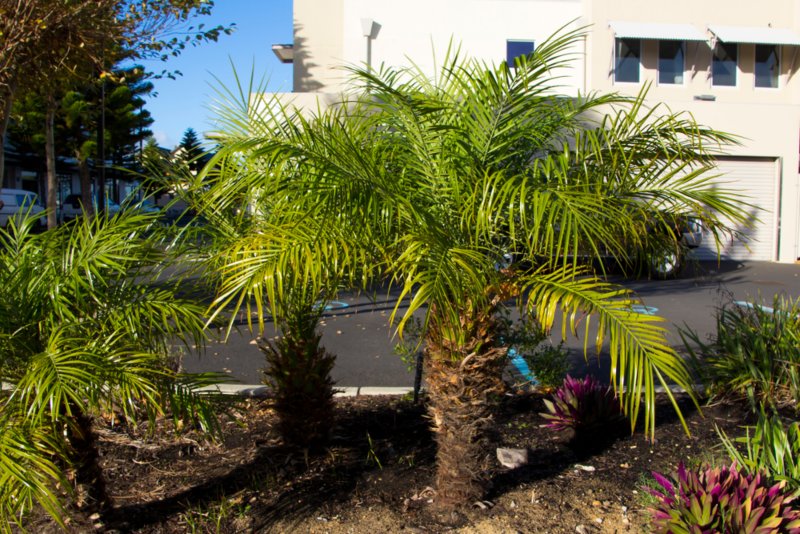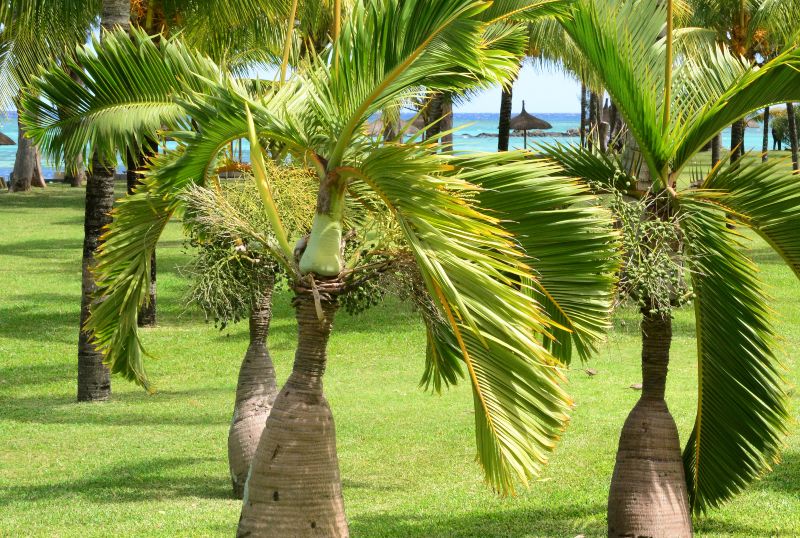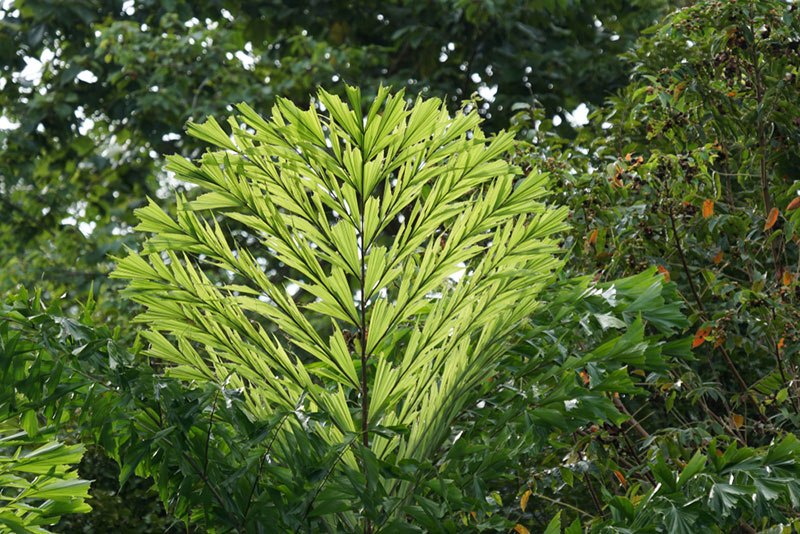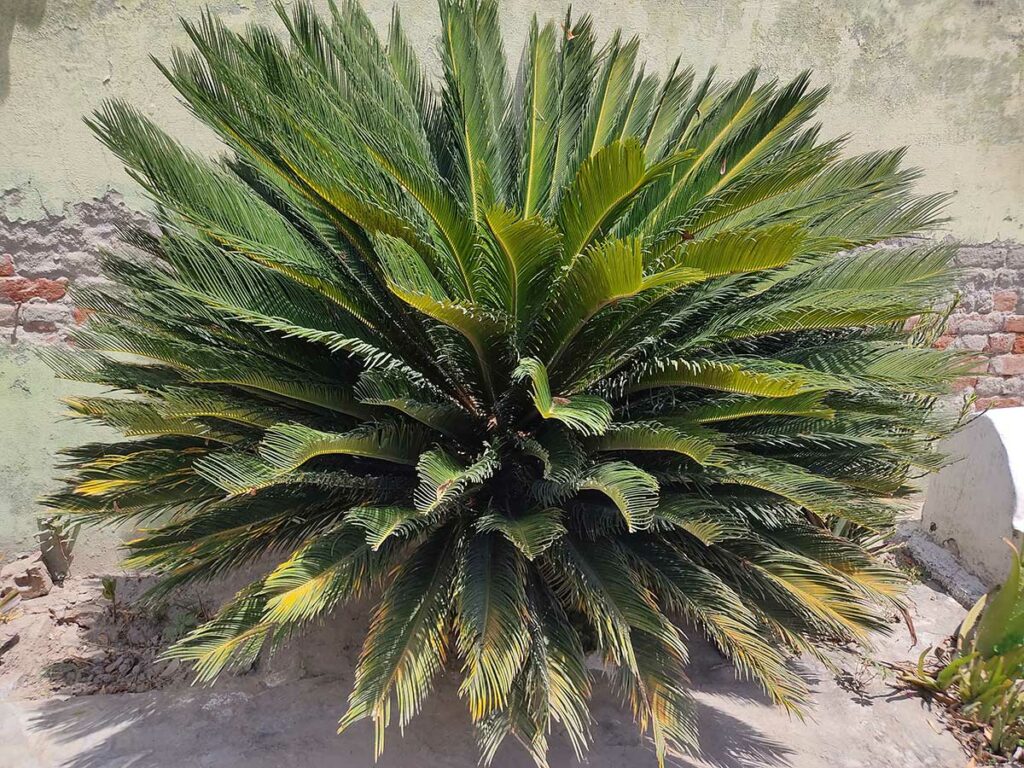The windmill palm is a versatile plant. It can be used for landscaping in a wider geographic area than many other palms. The palm can withstand weather from tropical to even some freezing conditions. It can tolerate most soils well, making it easy to tend.

This is a relatively easy-to-handle palm tree that is low maintenance and can grow in most well-draining soils. However, it is a little finicky when it comes to water.
This palm is thinner than many others and grows to about 20ft. The palms’ leaves can get to about 2-3 feet long, meaning its canopy is about 6 feet wide. Windmill palms have flowers from green to yellow to cream, depending on whether the plant is male or female.
The plant’s gender will also contribute to the size of the bloom as male blooms are larger, while female flowers are smaller and produce fruit.
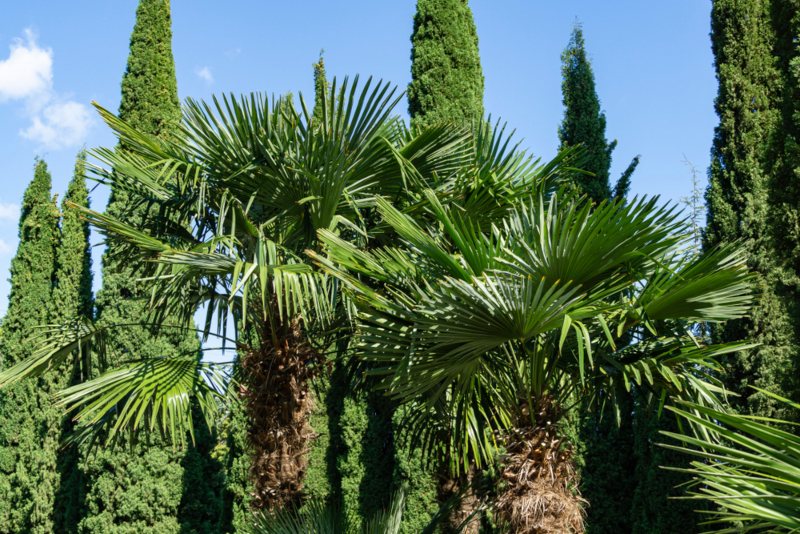
| Botanical Name: | Trachycarpus fortunei |
| Common Name(s): | Windmill palm, chusan palm, Hemp palm, Chinese windmill palm |
| Plant Type: | Evergreen |
| Mature Size: | 10-20 feet tall and 6-10 feet wide |
| Sun Exposure: | Partial shade, full sun |
| Water Needs: | Well Watered but not drenched |
| Soil Type: | Well Draining Soil |
| Soil pH: | 5.5-7.5 pH |
| Bloom Time: | Summer (June-July) |
| Maintenance: | Low |
| Flower Color: | Yellow, Cream, or green |
| Hardiness Zones: | 8a-11 (USDA) |
| Toxicity: | Fruit not edible; not toxic to cats or dogs |
Windmill Palm Light
These palms tolerate a variety of lighting conditions. The windmill palm thrives in full sun or partial shade. In colder regions or colder months, the palm can be in full sun (6 or more hours of direct sunlight). In warmer months, the windmill palm can also be in partial shade (2-6 hours of direct sunlight).
Watering the Windmill Palm
These palms need more water than other members of the Arecaceae (palm) family, which means giving it a good watering (though not drenching it within a few months of transplantation) often. However, it is essential to note that this palm does not do well with standing water or a high water table. It’s important to ensure high-drainage soil for this particular palm. Studies show that palms need more water during the summer months and less during the winter. Keep in mind when taking care of a windmill palm tree.
Temperatures
Varying temperatures are not as detrimental to this particular palm as others in the palm family. The windmill palm can withstand tropical temperatures and can weather freezing temperatures.
Best Soil for the Windmill Palm
Windmill palms handle most soil types, making them an excellent choice for beginner gardeners. The best growing options include loamy, rich, and well-draining soil. These palms are particularly susceptible to root rot and need plenty of water to be healthy, so having well-draining soil is vital.
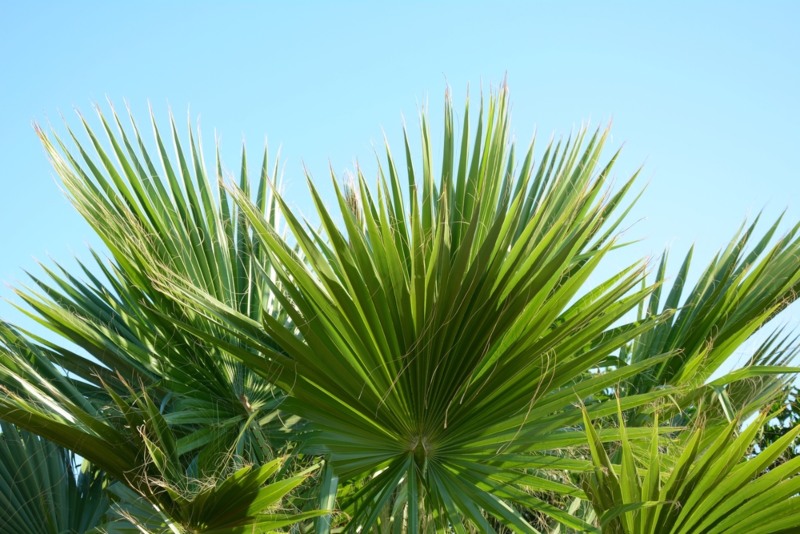
Fertilizing requirements
Regular fertilization helps windmill palms grow well (up to 1-2 feet a year, in the best growing conditions). Regular fertilization will also help keep the plant looking as visually pleasing as possible.
Are They Toxic?
Many palm trees are dangerous for humans and animals to ingest. However, the ASPCA has declared this palm to not be toxic for dogs or cats. It is important to note that the fruit of the windmill is NOT edible and should not be consumed by humans.
Propagation of the Windmill Palm
To propagate the windmill palm, you will need a female and a male palm. Females have smaller flowers than males and produce fruit, while males have large blooms that do not fruit. Seeds should appear on the female tree around winter in dark pods or droops similar to kidney beans in shape.
How to Prune
Pruning the windmill palm will help it look visually appealing and help the plant continually have healthy growth. To prune the palm, cut the leaves close to the trunk. When deciding what leaves to prune, choose only damaged, diseased, or completely dead leaves. Keep from tearing the leaves off, as this can cause the tree to be susceptible to diseases and pests.
Growing a Windmill Palm From a Seed
It is best and easiest to get a young potted windmill palm for landscaping or other purposes, but you can grow them from seeds. To begin, you will need to place a viable seed to soak in warm water for several days.
Clean off any pulp, then plant about 1/2 inch deep in wet soil. Place a lid of some sort over the area to create a greenhouse effect until seedlings show, then remove it. You should see results within 1-2 months.





